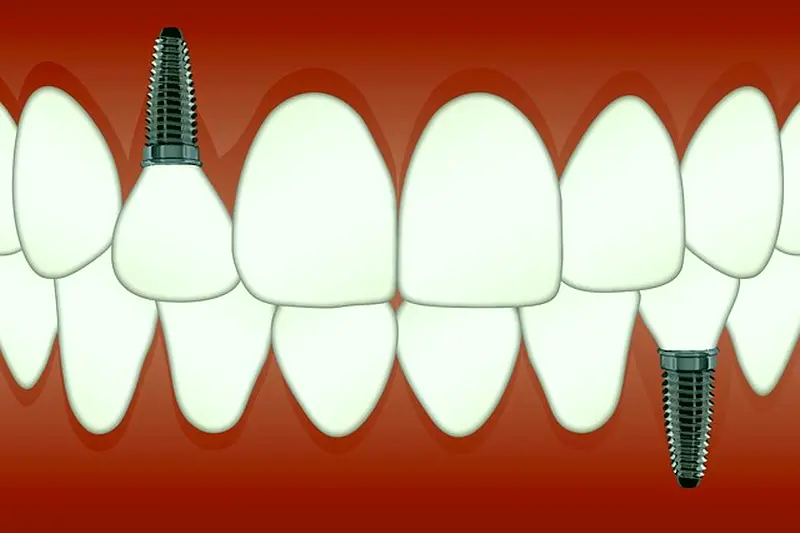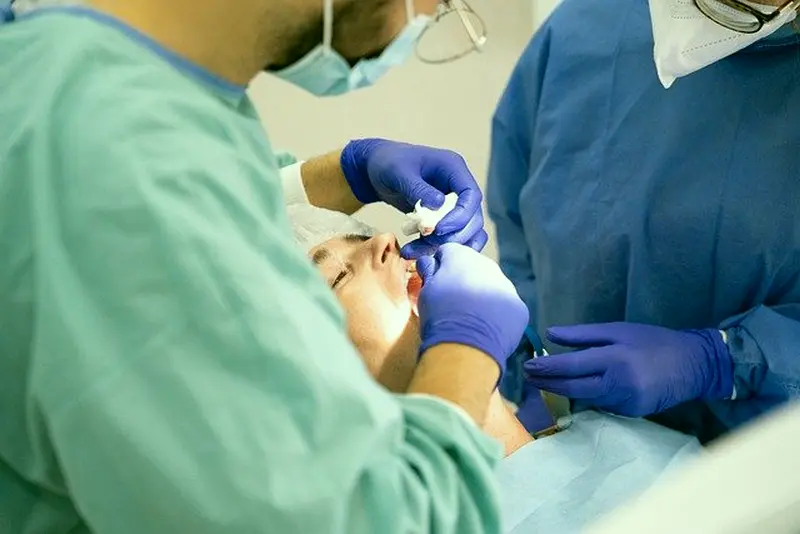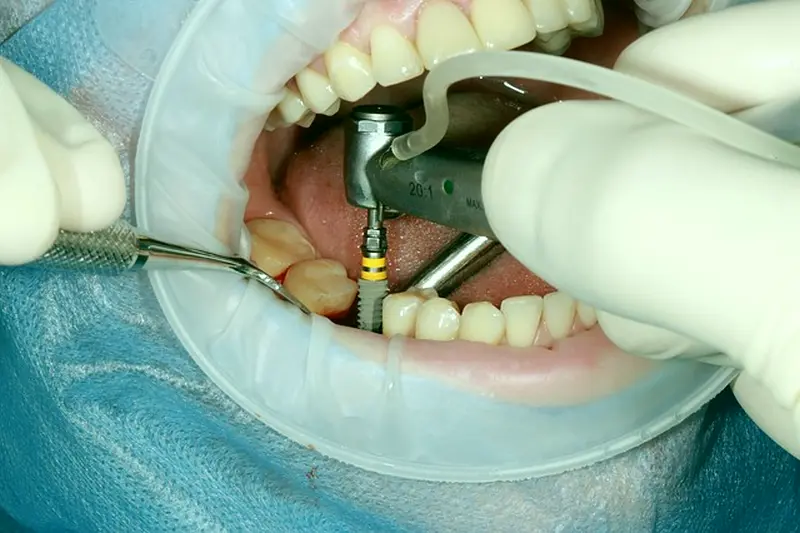You can have X-beams and 3D pictures taken and produce models using your teeth and jaw. Review of your case history. Inform your doctor concerning any medical conditions and medications you’re taking, including prescription and over-the-counter medications and supplements. If you have got certain heart conditions or orthopedic implants; your doctor may prescribe antibiotics before dental implant surgery to stop infection.
All About Dental Implant Surgery

Treatment Plan
This plan is ready-made for your situation and considers factors; like what number of teeth you wish to exchange and the condition of your jawbone and remaining teeth. To manage pain, anesthesia options during surgery include local anesthesia, sedation, or anesthesia.
See your dentist about which option is best for you. Your care team will instruct you to eat and drink before surgery; counting on the kind of anesthesia you have got in dental time. If you’ve got sedation or anesthesia; arrange to have someone take you home after the operation and desire to rest for the remainder of the day.
Also Check: 6 Hygienic Tips On How To Maintain Healthy Teeth And Gums
What to expect From Dental Implant
Dental embed a medical procedure is often a short-term activity performed gradually; with recuperating time between systems. The technique for setting an embed includes a few stages, including:
Removal of damaged tooth Jawbone preparation (inoculation), if necessary, implant placement.
- Bone growth and healing
- Abutment location
- Artificial dental placement
The entire interaction can require numerous months, from beginning to end. Much of that point is dedicated to healing and expecting the expansion of recent bone in your jaw.
Depending on your situation, the particular procedure performed, or the materials used, they may sometimes combine some steps. When bone grafting is required; a Jawbone transplant.
If your jawbone isn’t thick enough or too soft, you’ll need a bone graft before dental implant surgery.
This is often because the powerful chewing effect of your mouth puts lots of pressure on your bone; and if it cannot sustain the dental implant, the operation will probably fail. A bone join can make a stronger base for the embed. Several bone graft materials may be wont to rebuild a jawbone.
Alternatives may include a natural bone graft, for instance, from another location in your body, or an artificial bone graft; like bone replacement material that may provide support structures for brand new bone growth. Seek advice from your dentist about options that will work best for you.
It can require a while for the relocated issue; that remains to be worked out sufficient new unresolved issue an embed. Now and again, you’ll need a more modest bone to join; which may be done at the indistinguishable time; because they embed a medical procedure. The situation of your jawbone determines how you proceed.
Location of the dental implant

During the operation to position the implant; the oral surgeon makes a move to open the gums and reveal the bone. Holes are pierced into the bone; where the metal post of the implant is to be placed.
Since the post will act because the root; it’s implanted deep into the bone. At this time, you’ll still have a spot where the tooth is missing. If necessary, they will place a kind of partial, temporary prosthesis for appearance. You’ll remove this prosthesis for cleaning and while you sleep.
Also Read: 10 REASONS WHY EVERYONE NEED A TONGUE SCRAPER
While awaiting bone growth
Once the metal implant post is placed within the jawbone; Osseo integration begins. During this procedure, the jawbone grows into and joins the surface of the dental implant. This process, that may take several months, helps supply a solid base for your new artificial tooth; even as roots do for your natural teeth.
Also Read: Benefits Of Early Orthodontic Treatment (Between The 8-10 Ages)
Location of the abutment
Once the Osseointegration is complete, you’ll need additional surgery to position the abutment; the part where the crown will eventually attach. This minor operation is typically performed under local anesthesia in an outpatient setting.
To place the abutment
Your oral surgeon reopens the gums to reveal the dental implant. The abutment is affixed to the implant. The gum tissue is then shut around; but not over, the gap. This implies that you don’t need a further surgical step. However, because the abutment protrudes past the gum line; it’s visible after you open your mouth – and this may be until the dentist completes the denture.
Some people don’t like that look and want to possess the abutment placed in an exceedingly different method. After the abutment is set; the gums must grow for approx., and period before the factitious tooth is attached.
Also Read: How To Improve Your Smile – 5 Simple Things You Can Do At Home
After the dental implant surgery

Whether you’ve got dental implant surgery in one stage or several stages; you will experience several everyday ailments related to any variety of dental medicine; for example, Swelling of the gums and face.
- Bruising of the skin and gums
- Pain at the implantation site
- Minor bleeding
You may need pain medicine or antibiotics after dental implant surgery.
Contact the oral surgeon if Swelling, discomfort, or other problems deteriorate within the days after the operation. After each operation step, you will have to eat soft foods while the operation site heals.
Generally, your specialist will use join that break up all alone. If your stitches don’t resolve on their own, the dentist will remove them.
Also Read: 10 Reasons Why Becoming A Dental Assistant Is A Good Career Option
Results Of Dental Implant

Most dental implants are successful. Sometimes, however, the bone fails to melt sufficiently to the metal implant. Smoking can, for example, contribute to dental implant failure and complications. If the bone doesn’t intertwine adequately; the embed is eliminated, the bone is cleaned; and you’ll have the option to attempt the method again in around 90 days.
You’ll help your dental work – and remaining natural teeth – last longer if you: Practice excellent oral hygiene. Instead, like together with your natural teeth, keep implants, artificial teeth, and gum tissue clean. Specially designed brushes, like an interdental brush that slides between the teeth; can help clean nooks and crannies around teeth, gums, and metal posts.
Also Read: Invisalign Treatment – 8 Things You Should Know Before Performing It
Visit your dentist regularly After Dental Implant Surgery
Schedule dental checkups to make sure your dental implant is working correctly, and follow the recommendation for professional cleaning. Avoid harmful habits. Don’t chew hard objects, like frozen dessert and candy that may break your crowns – or your natural teeth. Avoid tooth-staining of tobacco and caffeine products. Get treatment if you grind your teeth.
Also Check:
- Invisible Regulation From Align Me – Things You Need To Know To Use It
- What Are The Changes Experienced At The Dental Office Treatment
Images by Bruno Pereira, володимир волощак, Ri Butov and Mudassar Iqbal from Pixabay

